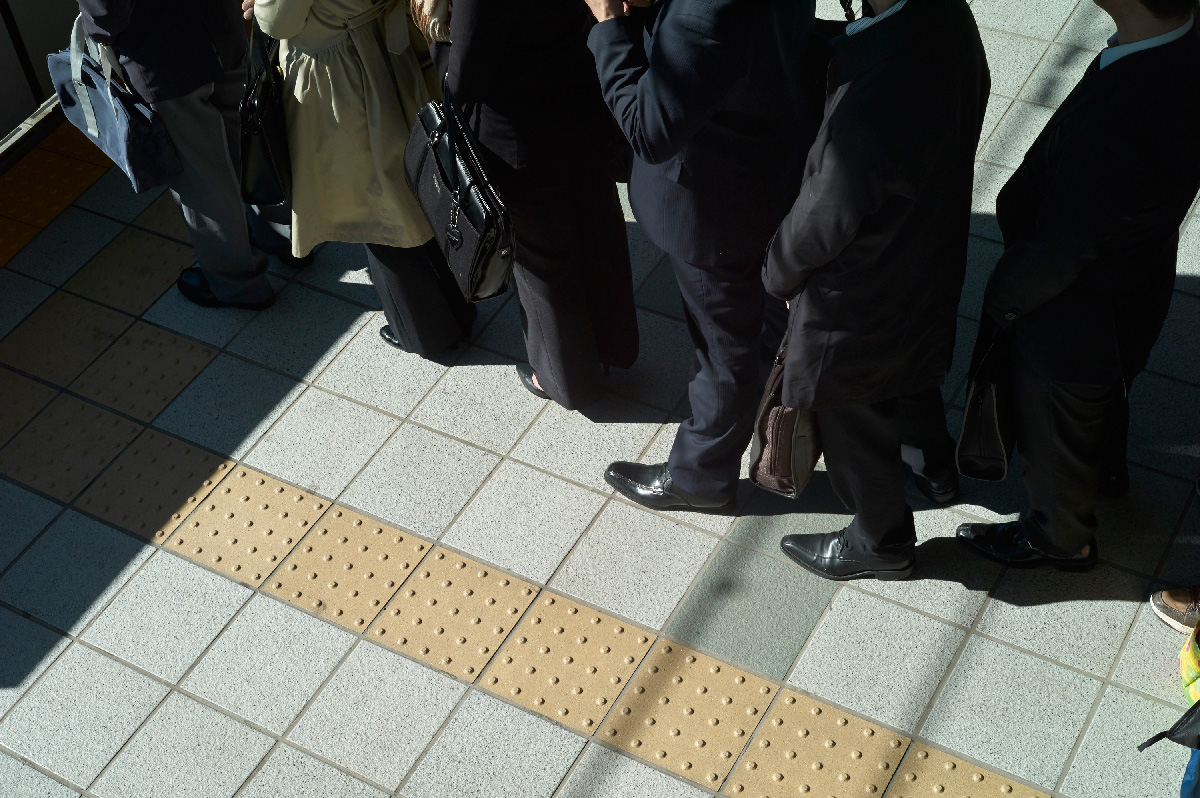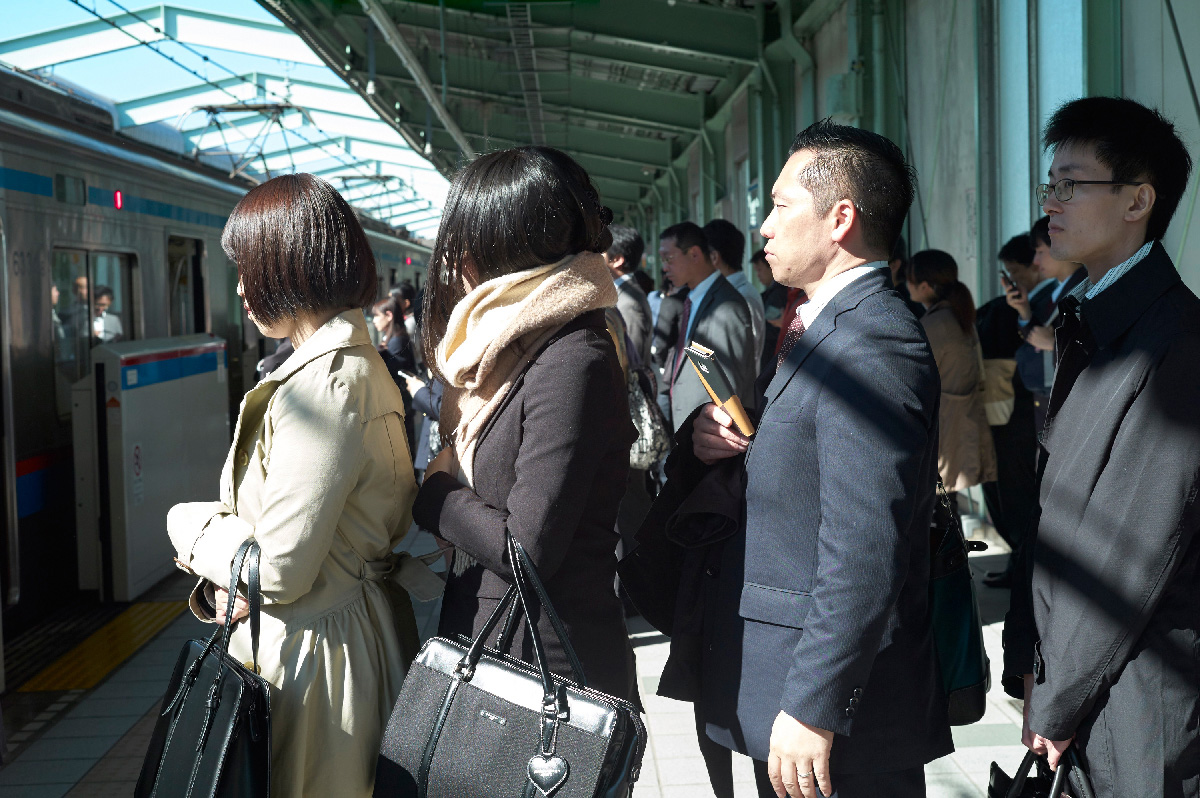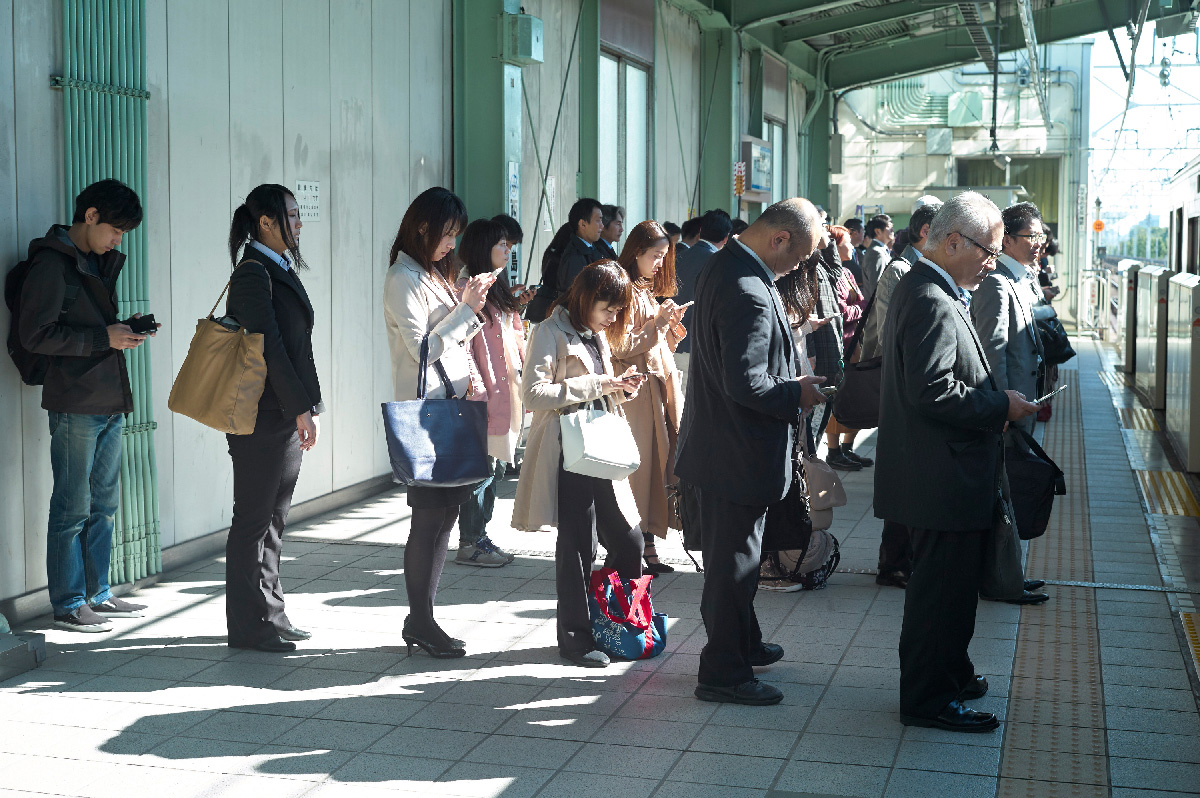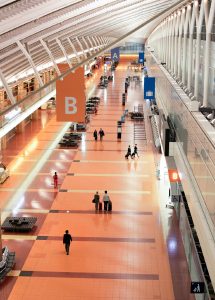Common Manner to Line Up Before Getting on the Train
Unknown Origin of Organised Way to Get onto the Train
People line up quietly and wait for the passengers to get off the train first before they get on. It is an ordinary manner to follow especially in the morning in Japan. However, it may seem uniquely Japanese to some of the foreign tourists and surprising that absolutely everybody follows this manner. So, when did this custom start? There are various theories about this but most accepted theory is that it started at Shibuya Station on Ginza Line after the World War 2. The platform was chaotic as being filled with passengers waiting for the train to arrive all over the platform. The station clerks requested them to make a line one by one. They even made a sign and hang it over their body to ask them to make lines. Afterwards, it became a manner that everyone followed and it was awarded by Ministry of Railways in 1947.

Collaboration Between Passengers and Railways
Around 1955, National Railway’s Yamanote line also started to adopt this manner as means of people getting onto the train most efficiently in the morning rush hour. In those days, even if the passengers were waiting in line, the positioning of the train didn’t exactly match where passengers had been waiting, so passengers had to move to the door still maintaining the line. Yamanote line used to have carriages with 3 doors and 4 doors but they standardised the carriage to have the same number of doors. Also positioning of the train inside the platform was established in details so getting onto trains became much smoother and less hustle. The manner where passengers wait in line at dedicated areas in platform and the fact that the train stops at certain position so that the doors are positioned where people had been waiting is the result of the care of the passenger and effort of the railway company.

How to Wait in Line on the Platform
Now, let’s try joining Japanese people’s way of getting on the train! First, look for the description on the floor of the platform to check where the designated areas are for “Getting on”, ”Waiting area for the first train” and ”Waiting area for the second train” and identify the appropriate waiting area for you. There are station clerks attendant at every station in Tokyo Metro so you can also ask for help. Once you step into the line quietly, then all you need to do now is just wait. During the peak time between 7am to 9am, the train leaves every 3 to 5 minutes. So stay calm when getting onto the train and never run into it. The amount of people who takes the train during one hour in the morning on Chuo Line (Express/Between Nakano and Shinjuku) is 76,665 people. As for Tozai Line (Between Kiba and Monzen-Nakacho) it is 83,260 people. Despite these huge numbers, people never get confused or trouble each other thanks to this good manner.

Data
| When did it start? | Around 1945 |
| Where can I experience this? | Main train stations on JR East Japan Yamanote line or other lines. At each station on Tokyo Metro |
| Best suited time of the year of a day? | 7:30am to 8:30am on a weekday |
| Data (Space, Weight, Number (Year/Month/Day)) | Top 3 stations in terms of average number of passengers to use per day (2015) JR East Japan/ 1: Shinjuku Station 760,043 people, 2: Ikebukuro Station 556,780 people, 3: Tokyo Station 434,633 people Tokyo Metro: 1: Ikebukuro Station 548,839 people, 2: Otemachi 313,620 people, 3: Kitasenju 289,001 people |
| Please note | Give extra 10 minutes when you need to take trains in the peak time of the morning to allow you to line up to get on the trains |
Reference:
Teito Rapid Transit Authority “50 years of history of Subway”
Tokyo Metro “Metro for tomorrow Ginza Line”
Makoto Inoguchi “Night with Natinal RailwayTrains” (Transportation News Co.,Ltd.)
Ministry of Land, Infrastructure and Transport “Congestion rate in the main areas of Tokyo” (2015)


